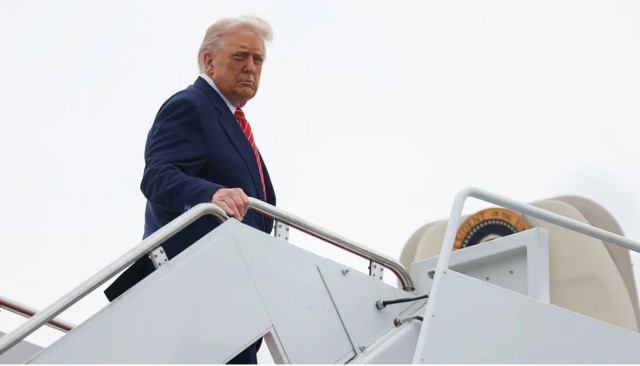
A Chinese military plane is seen flying over Chengdu, Sichuan Province, in a video shared on social media on December 26, 2024. Reuters
Blurry images of two new Chinese military aircraft, believed to feature stealthy designs, surfaced online on Friday, sparking intrigue among defense experts. While the images were unclear, experts agree that these are advanced aircraft models, but details were too vague to make firm conclusions.
Both of the designs are tailless, meaning they do not have the traditional vertical stabilizers that help maintain control. Typically, such aircraft rely on advanced computer systems that interpret the pilot’s control inputs to keep the aircraft stable. This design is a departure from conventional military aircraft, which usually rely on vertical stabilizers for stability.
The larger of the two aircraft is roughly diamond-shaped and has a distinctive air intake configuration—three separate intakes for its engines. Two are positioned along the fuselage, while one is placed on top, which is an extremely unusual layout. The smaller aircraft, on the other hand, features a more traditional design but, like the larger one, lacks a tail. Both designs show the absence of 90-degree angles, a common feature in stealth aircraft designed to reduce radar detection.
As China continues to modernize its military, the new designs signal the country's willingness to experiment and innovate. Euan Graham, a senior analyst at the Australian Strategic Policy Institute, remarked, "Whatever the merits or demerits, it appears to be a highly original design. They deserve kudos for that, and should shake off any lingering complacency that the U.S. and its allies always set the pace."
China’s Ministry of Defense has yet to respond to inquiries regarding the aircraft, while the U.S. Department of Defense acknowledged being aware of the reports but refrained from commenting further. Meanwhile, Japan Airlines reported that its systems were back online following a cyberattack that led to some flight delays.
Chinese military planes were spotted flying over Chengdu, Sichuan Province, in a video shared on social media on December 26, 2024. Reuters
In the realm of military aviation, the United States is several years into developing its sixth-generation fighter jet as part of the Next Generation Air Dominance (NGAD) program. While the details of this effort under President-elect Donald Trump's administration remain unclear, European and Asian countries are also working on next-generation aircraft under the Global Combat Air Programme, which includes a joint British-Japanese venture.
A video surfaced showing the larger of the two Chinese aircraft flying over Chengdu, which was confirmed by matching nearby landmarks, including buildings, signage, and trees, to satellite imagery and file images. However, the exact date of the footage couldn’t be verified.
The Chinese aircraft are not the first tailless designs in modern military aviation. The Northrop Grumman B-2 and B-21 stealth bombers, for instance, are both flying wings, and several uncrewed aircraft, such as the Lockheed Martin RQ-170 and China’s CH-7, also lack tails.
While these Chinese jets have a novel appearance compared to other aircraft in China’s fleet, much remains unknown about their stealth capabilities, maneuverability, speed, and the advanced avionics they may carry. These are critical factors that would determine whether these aircraft are truly next-generation, according to five defense experts.
Peter Layton, a defense and aviation expert at the Griffith Asia Institute, pointed out that labeling Chinese aircraft, such as the J-20 and J-35, as “fifth-generation” is challenging due to the unique design features of each model, which often do not appear again in future aircraft. Only the J-20 is currently in service, and the capabilities of both the J-20 and J-35 are largely unknown.
As the U.S. focuses on countering China’s military advancements in the Indo-Pacific, Kelly Grieco, a senior fellow at the Stimson Center, expressed curiosity over China’s decision to fly these new designs during the day, where they were easily visible. She suggested that it might be easier for China to keep pace with the U.S. on aircraft development rather than uncrewed vehicles or missiles, and speculated that this could be China's attempt to influence ongoing debates in the U.S. over the future of the NGAD program.
In other news, Chinese state media reported that the People’s Liberation Army Navy had launched a new amphibious assault ship on Friday.















